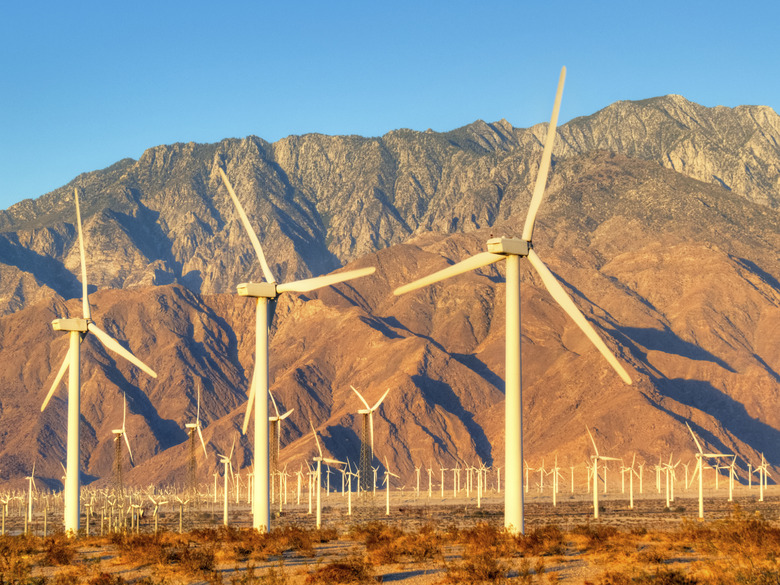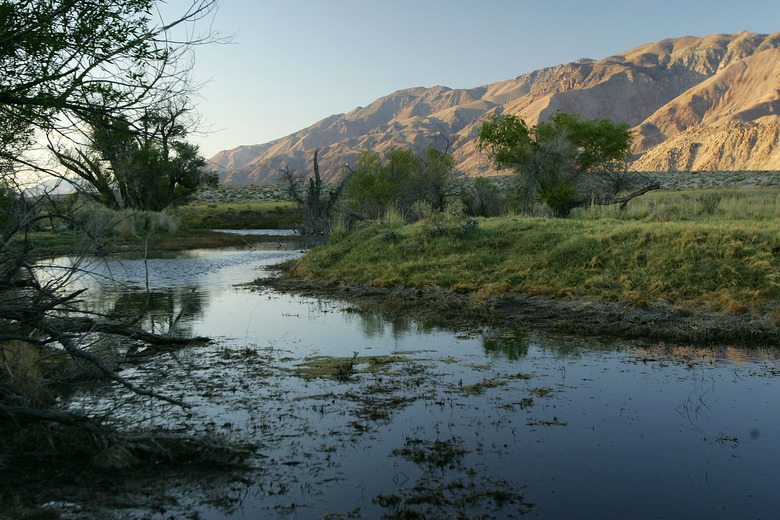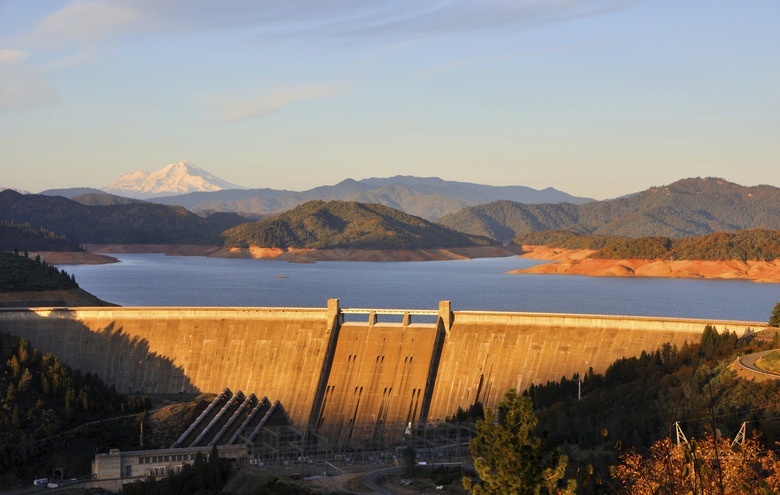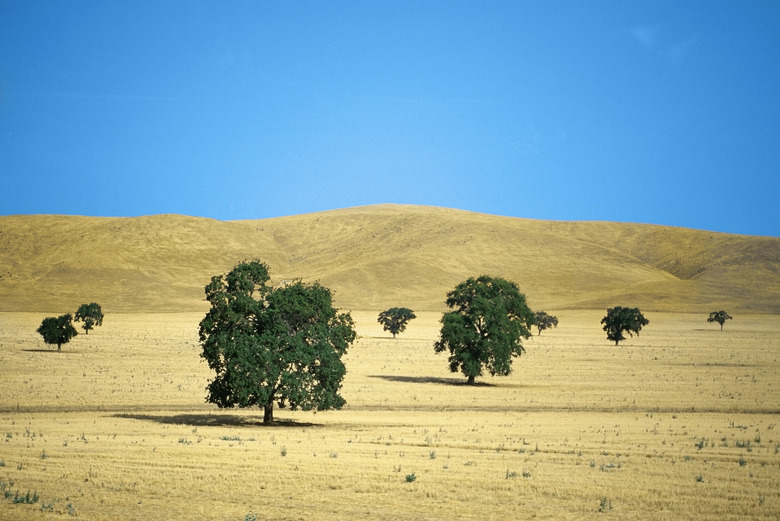California is an abundant source of natural resources. A vast state, its many climates offer a variety of sources of food, energy and shelter which make California a friendly climate in which to thrive. Depending on your location in the state, the most abundant resource could be trees, grasses, wind, sun or water. Properly harnessed, these resources can save time and money by reducing consumption of electric energy.
Wind

Wind power is abundant in California, especially in the far northeastern part of the state and in the southern mountain passes that lead to the desert near Palm Springs. Wind power is harnessed when winds turn a rotor on a windmill which is connected to a generator. According to “The Citizen Powered Energy Handbook” by Greg Pahl, the generator converts the wind power into electricity. The electricity can be used to immediately power electric appliances or it can be stored for later use.
Water Resources

With an astounding number of rivers, streams, lakes and waterfalls, as well as a coast that stretches alongside the entire western border of the state, California is a hotspot for water resources. California occasionally experiences droughts during which excessive home water use is discouraged, which allows California to retain its vital water resources.
Hydropower

With the rising cost of fossil-fuel based electricity, as well as the increasingly poor reputation of fossil fuels’ pollution, hydropower is becoming a popular clean option for renewable electric energy. California employs some of its water resources to produce electricity. According to the California State Water Project, the nation’s tallest hydropower dam is located in Oroville, a town in Northern California. The California State Water project maintains over 29 local reservoirs and was created to harness and preserve the precious water resources of California.
Grasses

California has vast fields of grasses, plants and trees. These plants can be used to grow food, to cultivate shade and to feed livestock. Though they can be a nuisance and present a severe fire hazard, grasses have an important part to play in the future of renewable energy. Grasses such as switchgrass grow quickly, burn hot,and can produce inexpensive heat energy when burned. According to Pahl, scientists theorize that switchgrass may be able to convert into fossil fuels like gasoline with the help of developing technology.
Solar

Solar power is abundant in California. The residents of the southern part of the state bask and grow tan in the reliable sun which warms the cities and deserts of the state. Vast areas of open desert exist in California, and many of these desert areas have already begin to use solar panels to convert the solar heat until electricity. Though solar cells are already in use in California, the potential for solar energy as a source of electricity still has a lot of room to develop. Most of the energy consumed in California is produced by burning coal or natural gas.
References
- The Citizen-Powered Energy Handbook; Pahl, Greg;
- The Homeowner’s Guide to Renewable Energy; Chiras, Dan; 2006

